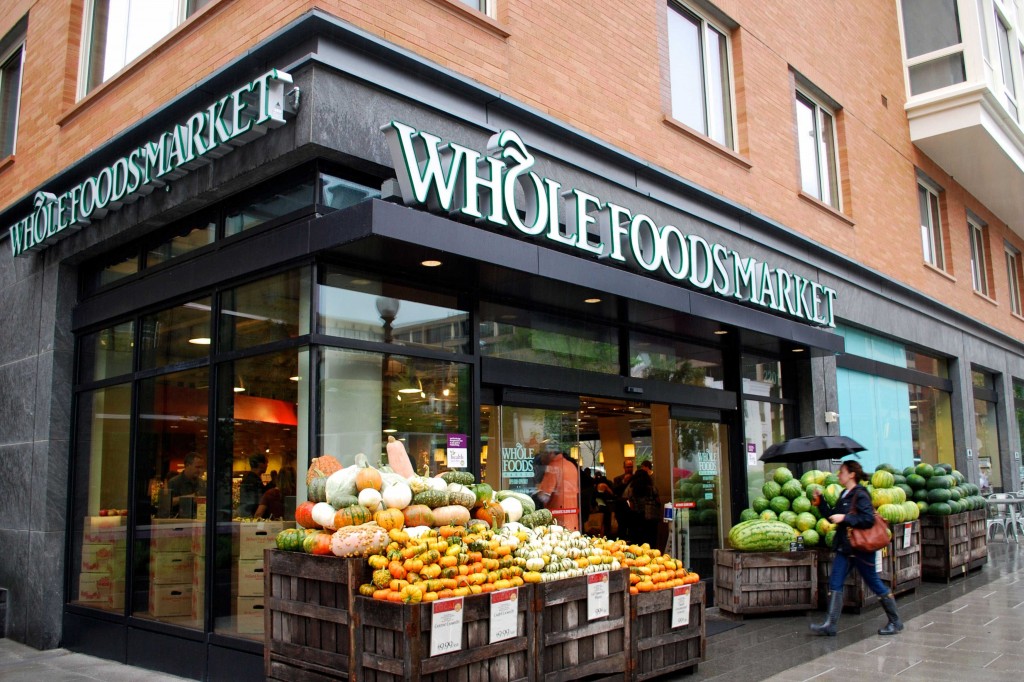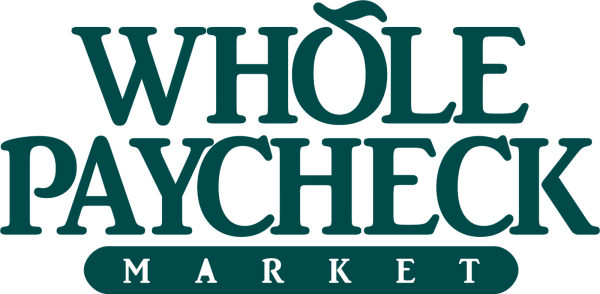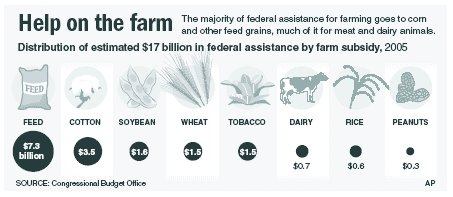I was amazed when I read this article “Unacceptable Ingredients: How Many of the Groceries Sold at Walmart Would Be Banned By Whole Foods?” but not surprised. For those of you reading who do not know these stores, Whole Foods is one of the most, if not the most, health conscious grocery stores in America while Walmart is a discount super store that sells practically everything including food.

Whole Foods prohibits 78 food ingredients in the foods they carry for sale. Here is the list of banned ingredients. When comparing the two stores, 54% of Walmart’s food items would not be permitted for sale in Whole Foods. Wow, that is astounding!

Whole Foods certainly has the reputation of being a very expensive grocery store, hence the nickname “Whole Paycheck” while Walmart is considered the hero of keeping every day household items, including food, affordable for the average American family.

For me the the issue isn’t about the jacked-up prices for elitist, luxury, or gourmet food offered by Whole Foods but the discounted and subsidized prices of mass food that we’ve been trained to accept as the actual price of food.
When the industrial wheat, feed grains (corn, sorghum, barley, oats), milk, rice, peanuts, beet and cane sugar, soybeans, beef, and pork industries are subsidized to the tune of $20 billion per year in America, we have been trained to misunderstand the true cost of real food. With subsidized feed grains, the chicken industry is also indirectly and heavily subsidized.

With a bit of pondering, you can see that these subsidized industries are the very ones that produce industrial, processed, junk, fast, snack, and cheap food. Healthful foods haven’t gotten more expensive, rather it’s junk food that has gotten cheaper, making healthful foods seem ridiculously priced and out of reach.
It has been estimated that if the US government did not subsidize the feed grains for cattle and the land on which to farm the cattle, a Big Mac from McDonald’s would cost $50.

Approximately 74% of all government subsidies goes to the meat and dairy industries while .37% goes toward vegetable and fruit growers. This makes meat and dairy (milk, cheese, eggs, yogurt, ice cream, etc.) artificially inexpensive so people naturally consume more. This is why shopping at Whole Foods can feel like an out-of-reach boutique experience, but the reality is that Whole Foods offers real food at real prices.
Americans spend the least percentage of their total household expenditure on food than people in any other country in the world at 6%. Americans used to spend 1/3 of their income on food before subsidies became the norm. As a whole, we like cheap food. However we also lead globally in the rates of heart disease, obesity, cancer, and type 2 diabetes, not to mention our willingness to degrade the natural environment and employ disgraceful labor practices. Cheap food may be easy to afford up front, however the back-end expenses are crippling.

Eating well is truly an investment. When you purchase organic, local, whole, real, non-subsidized food know that you are investing in your health, your nation, and your planet. All other food is discount, toxic food-like stuff. Rather than slam places like Whole Foods, be wary of retailers like Walmart who will sell anything to make a buck for themselves, at our collective future expense.

{ 11 comments… read them below or add one }
Thank you for this article Carla! It was exactly what I needed to read and makes so much sense. Items are always cheaper the more they are subsidized and now I realize the government is as much responsible for this as we are as consumers for buying so much of the crap! It is also helping me explain to my husband why our grocery bills are so much higher. I appreciate you so much!
Yes, it’s tough to handle the larger bills at the register, but in the long run it’s better for all involved…except the large industries that wish to profit off us. Glad you enjoyed the post Annie!
Carla what a good reminder. This is something I continue to struggle with. My last grocery store trip for the week was &100 for two people & even though I knew I had made excellent choices, the cost left me feeling anxious. I think another valid point is the enormous costs to the growers to be considered certified organic or non-gmo. Which makes me absolutely irate when the large corporations aren’t regulated to tell us their crap is NOT organic non-gmo!
Good point Angie. It costs so much for the small farmers to get organic certified that so many skip that step and lose business because of it even though they are taking the steps to grow more healthful and safe food. I know it’s tough to handle the large tab at the register, but feel confident that you’re helping to reduce the bill on the backside: medical, environmental, social justice, etc. Vote with those powerful dollars for what you stand for proudly!
I think your last sentence in the first paragraph needs to be modified to read “Walmart is a discount super store that sells practically everything including food-like substances.”
I realize that this excellent (!) article is dealing primarily with food subsidies and yet I still equate Walmart and all other non-healthy grocery stores with selling food containing a multitude of ingredients that we have no idea what they are nor can we pronounce them.
Surely the cheap price of food additives, which make our food become more “food-like” than food, are also part of the subsidies–high fructose corn syrup, soy product, etc etc.
You are totally totally right about the subsidies of meat and vegetables. However I’ll just bet that the numbers show more people eat a cereal-filled McDonald’s hamburger than a local grassfed beef burger, and more people eat Cheetos and Pringles than commonly eat an apple or walnuts. It’s the quality of the food products that people eat. Food products, I repeat. Just saying.
So true, Jan, so true. Food-like substances and food-like products prevail in mass markets. It’s sad that real food has become the exception. Thanks for taking the time to read & comment!
Good job. Thank you for taking the time to organize this in a way that makes sense. When I was young, I grew up with the impression that processed foods were expensive, and a budget conscious cook cooked from scratch. That just ain’t so anymore, is it?
You’re right Judi, not true at all anymore! Thank you for taking the time to read & comment.
Ah…but there is a third option! With very little effort we are able to provide the bulk of our nutrition through our garden and organic produce from our local Farmer’s Market. When you cut out the middle man, whether in the form of Walmart or Whole Foods, eating well can be very affordable.
Our garden is a mere 20′ x 40′ and we keep the soil fertile through the addition of horse manure. I pressure can but many things can be canned in a water bath canner…tomatoes, jams, and any pickled items.
Processed foods, whether from Walmart or from Whole Foods, are not the wisest choice when it comes to healthy eating.
So very true Terri!!!! Unfortunately for me, there is not a lot of organic, local sweet fruit, but I do love when I can get it. I wish I had a greener thumb. For a couple of years I had a plot in the community garden. We would have starved had my family been dependent on my crop. For those who have the space (gardens, not lawns!) and the talent and/or desire to learn, home gardening is an excellent choice!
My family currently lives in Germany now and food is so much healthier and cheaper than in the States. We can get 10 organic eggs for about $1.50 compared to my favorite grocery store Wegmans where they go for around $6 a dozen. Necessities are cheaper-fruits, vegetables, basic household and personal items. It’s always a shock when I go back home to upstate NY and buy groceries because they cost so much more.
{ 2 trackbacks }